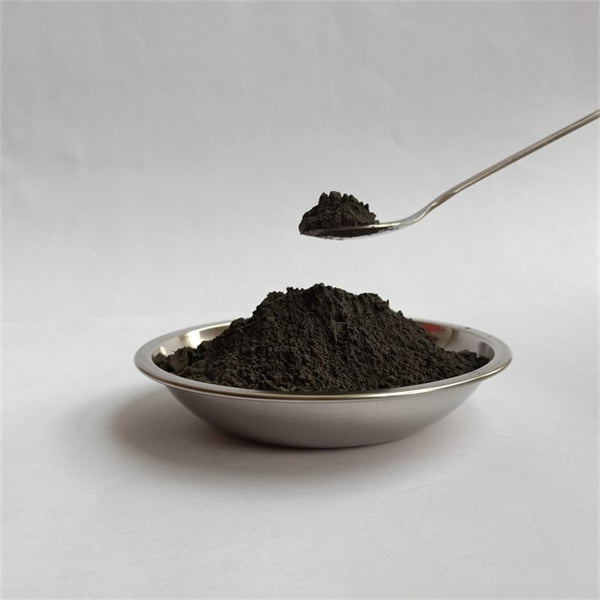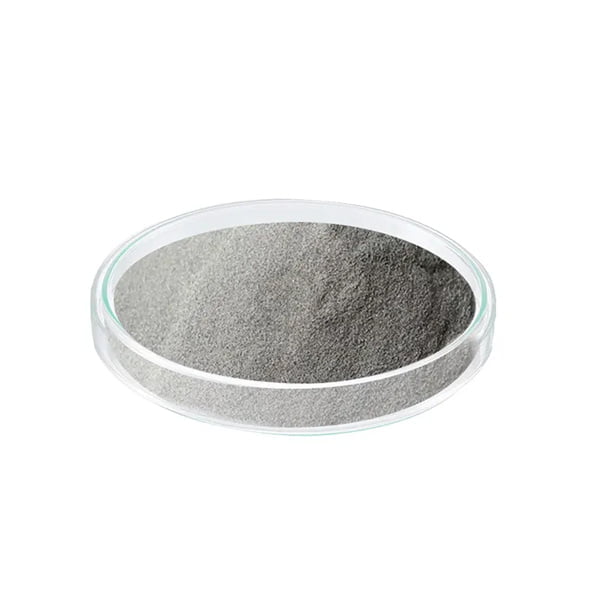metel power: použití SLM při výrobě zdravotnických prostředků
Obsah
Představte si svět, ve kterém lze s bezkonkurenční přesností a složitostí vytvářet personalizované zdravotnické prostředky přizpůsobené vaší jedinečné anatomii. To není sci-fi, ale realita selektivního laserového tavení (Selective Laser Melting).SLM), revoluční technologii 3D tisku, která mění budoucnost zdravotní péče.
Technologie SLM, známá také jako Laser Powder Bed Fusion (LPBF), využívá vysoce výkonný laser k selektivnímu tavení a spojování kovových prášků vrstvu po vrstvě, čímž vytváří složité trojrozměrné struktury. Tento inovativní proces otevírá nepřeberné možnosti výroby složitých zdravotnických prostředků s nebývalou přizpůsobivostí a funkčností.

Kovové prášky pro SLM v lékařských aplikacích
Základem technologie SLM jsou kovové prášky, které se používají jako stavební prvky. Tyto prášky se svými jedinečnými vlastnostmi a charakteristikami hrají klíčovou roli při určování výkonu a vhodnosti konečného zařízení. Zde je pohled na některé z nejčastěji používaných kovových prášků v SLM pro lékařské aplikace:
| Kovový prášek | Složení | Vlastnosti | Aplikace |
|---|---|---|---|
| Slitina titanu (Ti-6Al-4V) | 90% Titan, 6% Hliník, 4% Vanad | Vynikající biokompatibilita, vysoký poměr pevnosti a hmotnosti, dobrá odolnost proti korozi. | Ortopedické implantáty (např. kyčelní a kolenní náhrady), zubní implantáty, kraniofaciální implantáty. |
| Slitina kobaltu a chromu (CoCrMo) | 60% kobalt, 25% chrom, 15% molybden | Vysoká odolnost proti opotřebení, dobrá biokompatibilita, vynikající mechanické vlastnosti | Náhrady kyčelního a kolenního kloubu, zubní náhrady, páteřní implantáty. |
| Nerezová ocel (316L) | 66% Železo, 16% Chrom, 10% Nikl, 2% Molybden | Cenově dostupný, dobrá odolnost proti korozi, střední pevnost | Chirurgické nástroje, zdravotnické prostředky vyžadující biokompatibilitu a cenovou dostupnost |
| Tantal | 100% Tantal | Vynikající biokompatibilita, vysoká radiační schopnost (viditelná na rentgenových paprscích), dobrá odolnost proti korozi. | Kraniofaciální implantáty, zubní implantáty, páteřní implantáty |
| Nikl-titan (NiTi) | 55% Nikl, 45% Titan | Efekt tvarové paměti, superelasticita, dobrá biokompatibilita | Ortodontická rovnátka, stenty, cévní štěpy |
Za stolem:
- Slitina titanu (Ti-6Al-4V): Tento pracovní materiál je zlatým standardem pro mnoho lékařských aplikací díky své výjimečné biokompatibilitě, nízké hmotnosti a trvanlivosti. Jeho vysoká cena však může být limitujícím faktorem.
- Slitina kobaltu a chromu (CoCrMo): CoCrMo nabízí rovnováhu mezi cenovou dostupností a výkonem a nachází uplatnění v různých kloubních náhradách. Přestože existují obavy z možného uvolňování niklu, pokračuje vývoj bezniklových alternativ.
- Nerezová ocel (316L): Tato cenově výhodná varianta je vhodná pro zdravotnické prostředky, které vyžadují biokompatibilitu, ale nejsou vystaveny vysokému namáhání. Její střední pevnost vyžaduje pečlivé zvážení konstrukce pro náročné aplikace.
- Tantal: Tantal je ceněn pro svou vynikající biokompatibilitu a radiační schopnost a je ideální pro implantáty vyžadující viditelnost při rentgenovém zobrazování. Nevýhodou však může být jeho vysoká cena a obtížnost obrábění.
- Nikl-titan (NiTi): Tento jedinečný materiál má pozoruhodnou schopnost po deformaci znovu získat svůj původní tvar, takže je ideální pro ortodontická rovnátka a cévní štěpy. Jeho složitost zpracování a potenciální problémy s biokompatibilitou však vyžadují další zkoumání.
Tento výčet není úplný a další kovové prášky, jako je molybden a inconel, nacházejí specializované využití v SLM pro zdravotnické přístroje. Je velmi důležité pečlivě vybrat vhodný kovový prášek na základě specifických požadavků na zařízení a zvážit faktory, jako je biokompatibilita, mechanické vlastnosti, náklady a složitost zpracování.
Aplikace z SLM v oblasti výroby zdravotnických prostředků
Schopnost SLM vytvářet složité geometrie s bezkonkurenční přesností otevírá široké možnosti v oblasti medicíny. Pojďme se podívat na některé z nejvýznamnějších aplikací:
SLM lze použít k výrobě personalizovaných ortopedických implantátů:
Představte si implantáty navržené na míru, které dokonale odpovídají vaší jedinečné kostní anatomii. Taková je realita s technologií SLM. S využitím CT snímků pacientů mohou chirurgové vytvářet individuální implantáty, které se hladce integrují s kostí pacienta, což může vést k lepším dlouhodobým výsledkům, snížení rizika odmítnutí a rychlejšímu zotavení.
Například: Pacient se složitou zlomeninou, která vyžaduje náhradu, může využít implantát vyrobený na zakázku pomocí SLM. Tento implantát, navržený speciálně pro strukturu kosti pacienta, může nabídnout lepší přizpůsobení a lepší stabilitu, což může vést k rychlejšímu zotavení a přirozenějšímu rozsahu pohybu.
SLM lze použít k výrobě personalizovaných zubních náhrad:
Doby špatně padnoucích zubních náhrad jsou pryč. SLM umožňuje vytvářet vysoce individuální zubní implantáty, korunky a můstky, které dokonale odpovídají jedinečné anatomii zubů pacienta. To nejen zlepšuje estetiku a funkčnost, ale také zvyšuje pohodlí a spokojenost pacienta.
Například: Pacient, který potřebuje zubní implantát, může dostat implantát vytvořený na míru pomocí SLM. Tento implantát, přesně přizpůsobený čelistní kosti pacienta, nabízí ve srovnání s tradičními implantáty vyšší stabilitu a funkčnost, což může vést k lepší dlouhodobé úspěšnosti implantátu a přirozenějšímu vzhledu úsměvu.
SLM lze použít k výrobě složitých chirurgických nástrojů:
SLM umožňuje vytvářet složité chirurgické nástroje s bezkonkurenční přesností a funkčností. Tyto nástroje s tenkými stěnami, jemnými prvky a složitými mřížkovými strukturami nelze vyrobit tradičními metodami. To otevírá dveře minimálně invazivním operacím s menším poškozením tkání, rychlejší dobou rekonvalescence a lepšími výsledky pro pacienty.
Například: Chirurgové provádějící jemné neurochirurgické operace mohou používat speciálně navržené nástroje vyrobené pomocí SLM. Tyto nástroje s mikroskopickými prvky a lehkou konstrukcí umožňují větší přesnost a kontrolu během operace, což může vést ke snížení komplikací a zlepšení výsledků u pacientů.
Pomocí SLM lze vytvářet realistické lékařské modely:
SLM umožňuje vytvářet vysoce realistické lékařské modely kopírující anatomické struktury, jako jsou kosti, orgány a nádory. Tyto modely odvozené ze skenů pacientů poskytují chirurgům neocenitelné nástroje pro předoperační plánování. Lze je použít k simulaci operací, nácviku postupů a zlepšení komunikace s pacienty o jejich zdravotním stavu a možnostech léčby.
Například: Chirurg, který plánuje komplexní rekonstrukci čelisti, může použít model vytvořený pro konkrétního pacienta pomocí SLM. Tento model umožňuje chirurgovi předem si nacvičit zákrok, vizualizovat potenciální problémy a efektivněji komunikovat s pacientem o operačním plánu, což může vést ke zlepšení výsledků operace a snížení úzkosti pacienta.
Nad rámec aplikací:
To je jen několik příkladů toho, jak SLM mění lékařskou péči. S dalším vývojem této technologie lze očekávat, že se objeví ještě více inovativních aplikací, které změní způsob diagnostiky, léčby a zvládání různých zdravotních stavů.
Zvažování přínosů SLM ve výrobě zdravotnických prostředků
Ačkoli SLM nabízí obrovský potenciál, je nutné si uvědomit, že jeho výhody a omezení získat ucelenou představu o jeho použitelnosti ve zdravotnictví.
výhody:
- Bezkonkurenční přesnost a komplexnost: SLM umožňuje vytvářet velmi složité struktury s mikroskopické vlastnosti, což je při použití tradičních výrobních metod nemožné.
- Přizpůsobení: Schopnost personalizovat zdravotnické prostředky na základě individuální anatomie pacienta může výrazně zlepšit jejich přizpůsobení, funkčnost a dlouhodobý úspěch.
- Snížená invazivita: Chirurgické nástroje vyrobené pomocí SLM umožňují minimálně invazivní zákroky, což vede k rychlejšímu zotavení a snížení nepohodlí pacientů.
- Zlepšení předoperačního plánování: Lékařské modely vytvořené pomocí SLM poskytují neocenitelné nástroje pro plánování operací a komunikaci, což může vést ke zlepšení výsledků operací.
Omezení:
- Vysoká cena: Stroje pro SLM a kovové prášky mohou být drahé, což činí tuto technologii méně dostupnou pro všechna zdravotnická zařízení.
- Omezený výběr materiálů: Přestože se nabídka kompatibilních kovových prášků rozšiřuje, stále není tak rozsáhlá jako u tradičních výrobních metod.
- Drsnost povrchu: Součásti vyráběné metodou SLM mohou mít ve srovnání s tradičně vyráběnými protějšky drsnější povrch, což může v některých aplikacích vyžadovat dodatečné následné zpracování.
- Regulační hlediska: Protože se jedná o relativně novou technologii, čelí SLM neustálé regulační kontrole, která má zajistit bezpečnost a účinnost zdravotnických prostředků vyráběných touto metodou.
Vyvážení vah:
I přes svá omezení jsou výhody SLM při vytváření personalizovaných, vysoce funkčních zdravotnických prostředků nepopiratelné. Očekává se, že s tím, jak bude technologie dozrávat, se budou snižovat náklady, rozšíří se výběr materiálů a budou se více prosazovat regulační postupy, což otevře cestu k širšímu uplatnění SLM ve zdravotnictví.

Nejčastější dotazy
1. Je SLM bezpečná pro zdravotnické prostředky?
Zdravotnické prostředky vyráběné společností SLM procházejí přísným testováním a schvalováním ze strany regulačních orgánů, aby byla zajištěna jejich bezpečnost a účinnost. Biokompatibilita použitých kovových prášků je klíčová a probíhající výzkum se zaměřuje na vývoj nových materiálů.
2. Jak pevné jsou zdravotnické prostředky vyrobené metodou SLM?
Pevnost zařízení vyrobených metodou SLM závisí na konkrétním použitém kovovém prášku a na konstrukci zařízení. SLM však může vyrábět zařízení s mechanickými vlastnostmi srovnatelnými nebo dokonce převyšujícími vlastnosti tradičně vyráběných protějšků.
3. Kolik stojí zdravotnické prostředky vyrobené metodou SLM?
V současné době mohou být zařízení vyráběná metodou SLM dražší než tradičně vyráběná zařízení, a to kvůli vyšším nákladům na materiály a vybavení. Očekává se však, že s tím, jak bude tato technologie dozrávat a jak se bude rozšiřovat, budou náklady klesat.
4. Jaké jsou budoucí vyhlídky SLM ve výrobě zdravotnických prostředků?
Budoucnost SLM ve výrobě zdravotnických prostředků je jasná. S pokračujícím pokrokem v oblasti technologií, materiálů a předpisů je SLM připravena hrát stále důležitější roli při vytváření personalizovaných, funkčních a nákladově efektivních zdravotnických prostředků, což v konečném důsledku povede ke zlepšení péče o pacienty a jejich výsledků.
Závěr
SLM představuje změnu paradigmatu ve způsobu výroby zdravotnických prostředků. Její schopnost vytvářet personalizovaná, složitá a vysoce funkční zařízení otevírá dveře personalizované medicíně a lepší péči o pacienty. Přestože problémy přetrvávají, budoucnost SLM v medicíně je slibná a její potenciál způsobit revoluci ve zdravotnictví je nepopiratelný. S dalším vývojem této technologie lze očekávat, že se objeví ještě více inovativních aplikací, které budou utvářet budoucnost medicíny a nastolí novou éru personalizované a efektivní zdravotní péče.
Sdílet na
MET3DP Technology Co., LTD je předním poskytovatelem řešení aditivní výroby se sídlem v Qingdao v Číně. Naše společnost se specializuje na zařízení pro 3D tisk a vysoce výkonné kovové prášky pro průmyslové aplikace.
Dotaz k získání nejlepší ceny a přizpůsobeného řešení pro vaše podnikání!
Související články

Vysoce výkonné segmenty lopatek trysek: Revoluce v účinnosti turbín díky 3D tisku z kovu
Přečtěte si více "O Met3DP
Nedávná aktualizace
Náš produkt
KONTAKTUJTE NÁS
Nějaké otázky? Pošlete nám zprávu hned teď! Po obdržení vaší zprávy obsloužíme vaši žádost s celým týmem.

Kovové prášky pro 3D tisk a aditivní výrobu
SPOLEČNOST
PRODUKT
kontaktní informace
- Město Qingdao, Shandong, Čína
- [email protected]
- [email protected]
- +86 19116340731
















